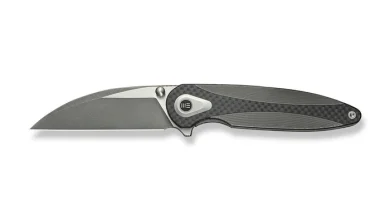Night Vision & Thermal Optics: How To Shoot In The Dark

Want to learn how to see and shoot in the dark? Here we discuss night vision and thermal optics, their history and how to pick the best option for your needs.
The ability to see in the dark is an advantage that men have sought for centuries. The veil of darkness has always been a powerful reminder of the limits we have, and the loss of our sight in the dying of the light amounted to the end of the hunt … and gave way to the fears we still have of monsters and the unknown.
Seeing in the dark is something we can do today thanks to technology, but there are some very large misconceptions and lots of myths about just what these optics can do—and where they are useful.
What follows may surprise you.

History of Night Vision and Thermal Optics
Night vision has been around for quite a while—in a broad sense going back to World War II—but it has only been miniaturized enough to be truly useful somewhat recently. Some of the first attempts at this technology were large and required a great deal of battery power to use, such as the case with the USMC M3 carbine (a type of M1 carbine that was specialized for use with optics) variant, which used an early infrared scope and illuminator … but also required a backpack loaded with batteries.
Today, many of the best night-vision optics are powered with simple CR123 batteries, and sometimes are even rechargeable with a USB cable. For a long time, civilian night vision technology was a ways off, and it wasn’t until the past 20 years that the technology became available—and reliable enough—on a larger scale that hunters took notice. The War on Terror era generated more interest in this tech on the civilian side, and during the 20 years that war was fought, night vision became widely available for civilian use.
Today, seeing night vision in the wild is somewhat common, and it can be bought at most sporting goods retailers. Later generations of night vision still operate on much of the same technology as early versions, but the quality of the image intensifier tubes keeps getting better as opposed to older models.
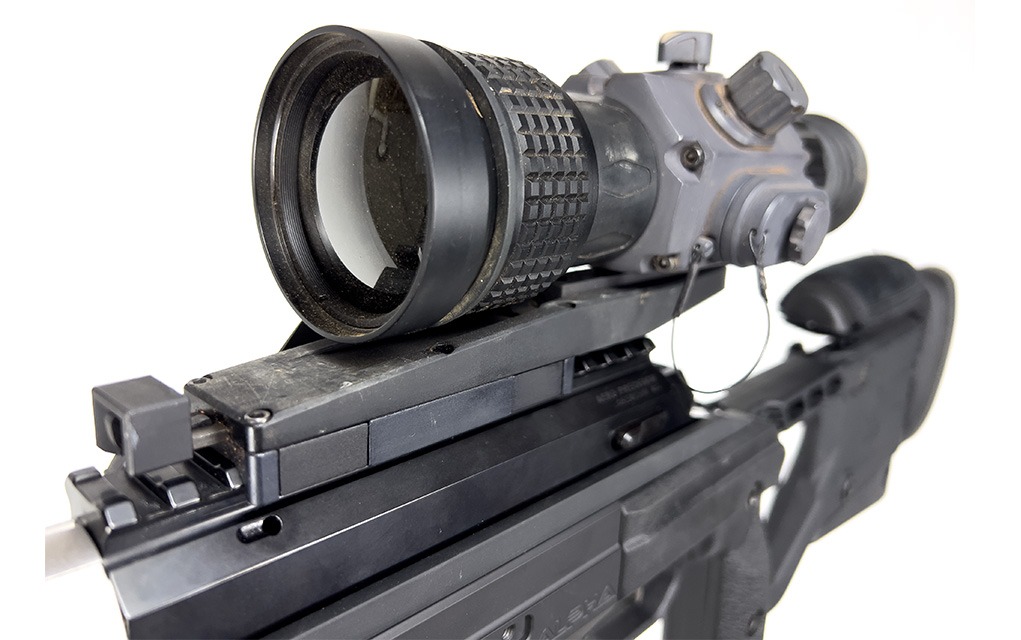

Thermal imaging technology, or at least a very abstract derivative of it, goes as far back as 1800—but don’t get the idea that we were slapping FLIRs on our flintlocks. Sir William Herschel was the first to suggest that certain wavelengths of light registered at different temperatures when he made the discovery using a special prism to separate light waves and then record the temperatures. This discovery is largely the basis for thermal imaging technology, and Herschel was right in that invisible radiation could be detected as heat.
Fast-forward to the post-WWI era, and there were a few thermal detecting devices, but they saw very limited use in WWII. Even during the Vietnam War, the technology was still very large … and costly. Thermal imaging wasn’t widespread outside of military uses until it began to become somewhat cheaper and smaller. It saw its first civilian uses in construction and medical applications, but the miniaturization of the devices was still quite far away. In the early 2000s this changed, and with the explosion of the digital age, thermal imaging became quite common. In fact, it’s maturing rapidly, and more companies are adding this technology to their product lineups. I suspect that in a few short years many of the high-end “day” scopes will also have thermal imaging capabilities in one package.
Legality is something that many people have issues with when it comes to buying this type of technology. In use, it’s incredible, but the applications are limited. Thermal imaging optics are really for hunting and identifying game; you can’t really target shoot with them unless you’re able to somehow create heated targets. I use Hot Hands hand warmers stapled to a target board to zero my thermal optics.
There are lots of liability issues with shooting in the dark, but certain ranges do allow it under special circumstances. Regulations for hunting typically allow the use of thermal or night vision for hunting wild pigs or varmints such as coyotes, but not for large game like deer and elk. There are, of course, legal shooting hours for these animals, and hunters are discouraged by both the law and light limits against using thermal or night vision.
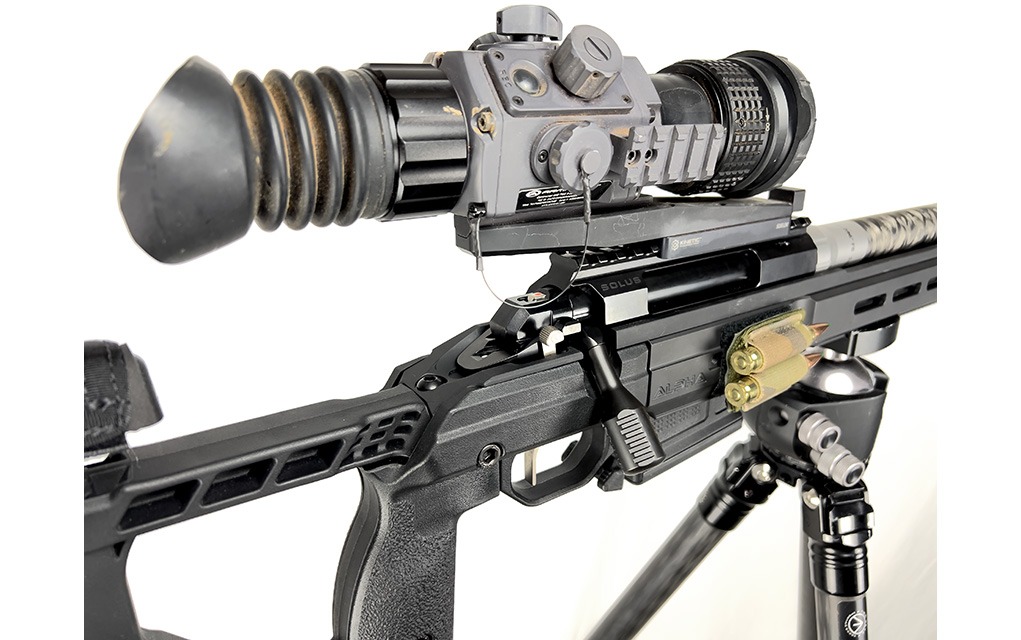

In some areas, possessing this type of gear is also prohibited when hunting, but at the rate technology is being developed, it’s hard to control. Today, you can have thermal imaging on your cell phone.
Hollywood: Missing the Target
Most people have received their introduction to the wide world of thermal and night vision tech thanks to Hollywood. However, the same place that made it cool also got a large deal of it wrong, and those myths have carried over to reality in some not-so-great ways.
The main “myth” portrayed is that thermal and night vision technology is clumsy. In reality, these systems are quite easy to use and far more effective than you might imagine. For instance, it’s not uncommon to be able to see individual hairs with thermal optics; the technology has progressed to the point where it’s very, very high definition.
Contrast this with the thermal vision we all know from the classic Arnold Schwarzenegger film Predator, which is so ingrained in the night-vision world that most thermal optics have a filter to replicate this relatively outdated visual representation of heat. In the movie, an alien big-game hunter comes to Earth to hunt soldiers and other armed men using high-contrast colored thermal vision, a key plot element. Most people typically shoot with “white hot” filters for high contrast on game. Sadly, the “predator” color filter isn’t very effective for hunting, but I do enjoy that it’s available.


The Predator’s thermal vision was stunning for the time, and most people had never seen something like it when the film came out. Interestingly enough, the definition of the thermal vision used by the alien hunter wasn’t so much better than what was around Earth at the time. In fact, we’ve advanced so far now that even our midrange thermals can achieve high definition and provide clarity to hundreds of yards. Not only that, but detection ranges are getting better, meaning that you can easily detect thermal signatures past 1,000 yards with many of today’s commercial options.
While Schwarzenegger managed to defeat the alien by covering himself in mud to conceal his body heat, we can only assume that this was due to some unforeseen circumstances with the Predator’s own technology. In real life, you’d have no problem seeing a person with mud on them. Perhaps the Predator was afraid the interstellar DNR would fine him and revoke his license if he used better optics. I can only wonder if there is the alien equivalent to straight-wall case restrictions and capacity limits.
Night vision is a bit different in that it has some far more stratified generations as opposed to thermal optics, which are decidedly getting smaller and becoming less expensive. Night vision again is largely misrepresented in film as much, if not more, than thermal imaging. Common night vision is quite good and is a major advantage, but it has some handicaps that thermal does not.
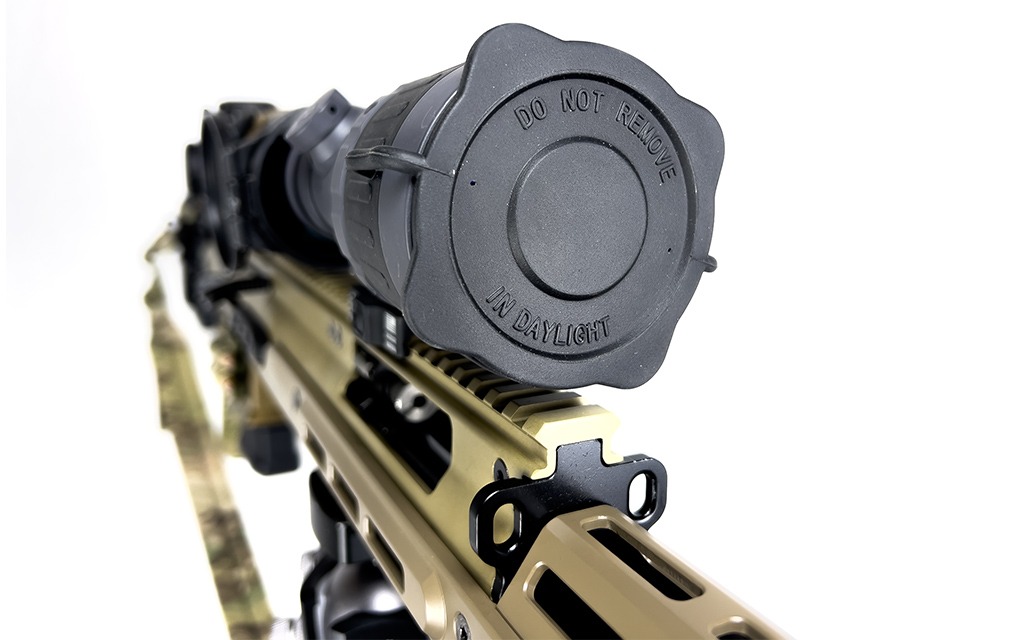

Chief among these is that night vision optics are relatively delicate and can be damaged, or even destroyed, by bright light. Non-digital night vision must not be used in the daylight, except in some very limited circumstances. While the movies have tried to do night vision justice, it’s typically not a feature for the hero because the action needs to happen in enough light for the audience to enjoy it.
Arguably, the most famous night-vision scene in history takes place in Silence of the Lambs, where the villain uses a night vision headset to toy with the protagonist. Night vision, otherwise, is such an advantage that pop culture has largely not been able to grapple with it due to how lopsided it could make the story … to the point that it simply isn’t included to increase tension. Real night vision goggles aren’t the grainy, dim-green color pallet we see and, no, the goggles themselves don’t glow.
Understanding Thermal Optics and NVDs
Thermal imaging and NVDs (night-vision devices) are used in a similar way by shooters, but they are quite different in terms of how they work … and what they’re capable of. Night vision, contrary to what you see in the movies, does require some light to work. Thermal imaging doesn’t require ambient light to function, nor will it be damaged by daytime use.
Night vision, in most generations, works by what’s called image intensification. The scopes collect light from exterior sources, including the moon and stars, and the optic turns them into an image we can perceive. If you were in a totally pitch-black basement with absolutely no light, your night vision wouldn’t do anything. As a result of this, infrared beams are often used with night vision devices—but be aware that these are essentially flashlights we can’t see, and other users of night vision systems can actually see your beam emanating from your optic. That’s not good if you want to remain as hidden as possible, but not really an issue if you’re a hunter … assuming you’re hunting legally.
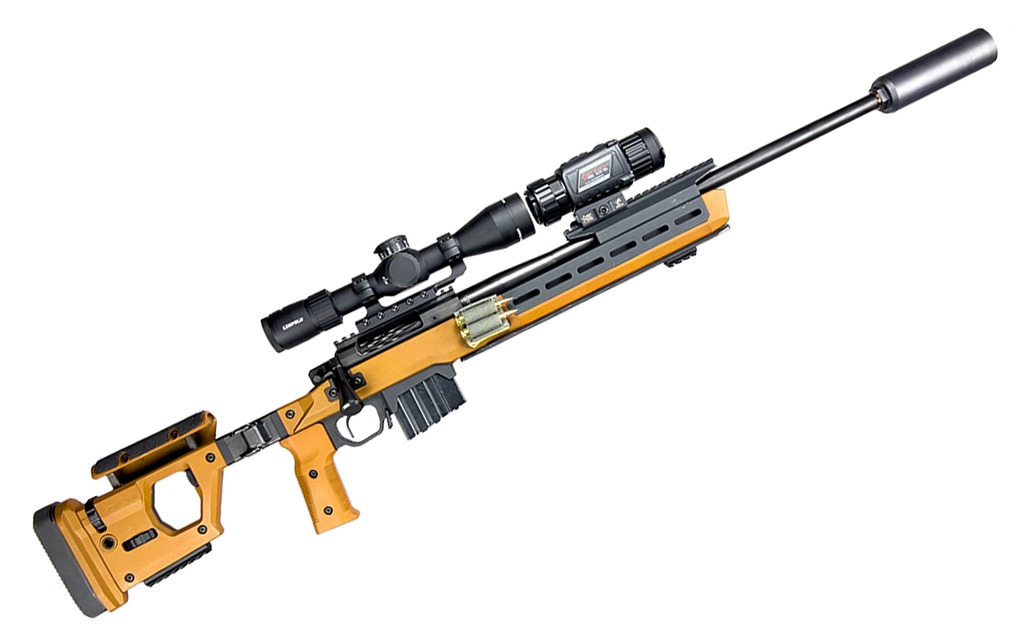

Thermal imaging devices work by detecting radiation. There’s a bit more to it, but for the sake of keeping this concise, thermal optics are sensors that can display minor differences in radiation with hotter objects generating more radiation. The images we see in the optic are a type of thermogram, and thanks to the advances in both computing technology and cameras, we can make devices that not only record video, but also broadcast with Wi-Fi or Bluetooth.
Thermal optics today are what could be described as radiation-detecting smart cameras. The display on the optic is a feat of engineering, as you’re not seeing through it at all, even with clip-on thermals. You’re looking at a little screen that, in many cases, isn’t different from that on your camera or cell phone. The fact that we can mount these on guns and also zero them as you would a traditional scope is downright impressive.
Of note is that with thermal clip-on optics, your day scope is literally not looking at anything; the image you see through the glass is a tiny screen that’s meant to be looked at with magnification. You’re not “seeing” the target in a straightforward sense.
Pros and Cons
While I don’t usually play favorites when it comes to these topics, from a hunting point of view, thermal optics are vastly superior to night vision due to their ability to detect prey and positively identify it at distance.


Night vision is very good today, but in my opinion, it doesn’t give you an advantage over a day scope. You can see at night with them, but the effectiveness is limited by ambient lighting conditions. It’s the same as a day scope in this sense: You can be looking right at an animal and not see it because it’s partially concealed behind a tree or bush. With thermal, you’d easily be able to detect the same animal. Thermal has the ability to detect through atmospheric conditions and even can see little bits through cover. So, even during the day, that bush you can’t see through with the naked eye might be only a minor issue to thermal.
Night vision for hunting is very functional, and it’s pretty straightforward to use. Night vision clip-ons are much more desirable than straight-up night vision scopes because they can be used to extend the use of the gun rather than limit it to just night. I like the clip-on NVD I’ve been using for some time from Armasight. It’s extremely clear and jives well with any day scope I’ve used. There’s no fuss to using it, and on a moonlit night, it’s so bright and clear that it’s truly like a cloudy day: You can see everything just as if it was noon.
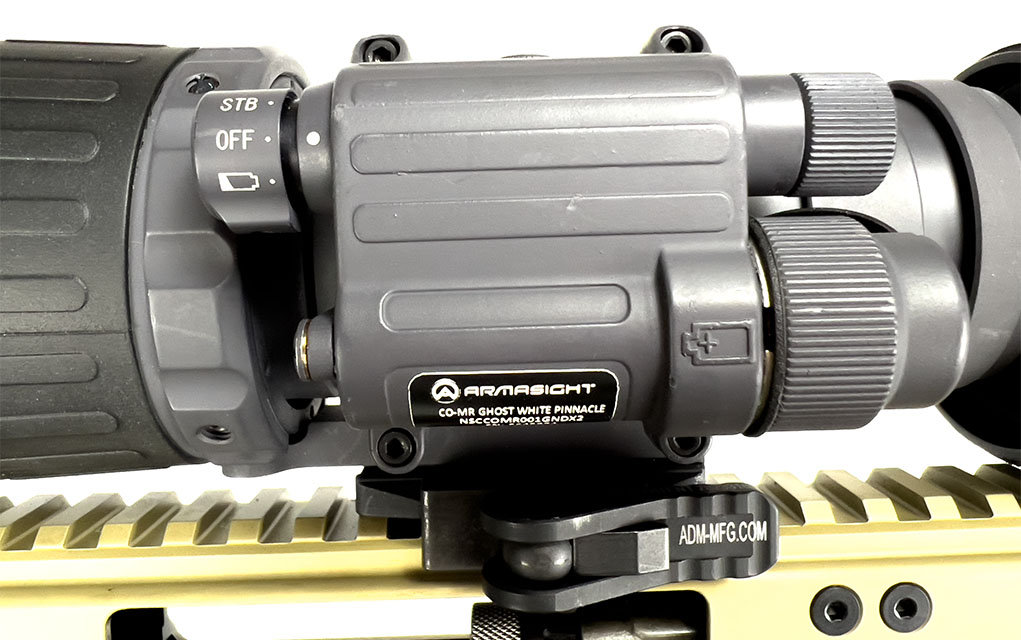

The damage that can occur to night vision devices in the daylight has to do with how they collect light. Again, there’s a much longer scientific explanation of how these work, but basically think of it as being able to gather so much light that it can be ruined. The intensifier tubes that these optics are designed around are so good at utilizing light that they can fry with too much. You need to keep light away from it to keep it safe, but it still needs some light to work, just not too much. Each generation of night vision improves, and the situation is getting better with intensifier tubes being able to be used in a wider range of light conditions. But, overall, their utility lies in the dark, whereas thermal can be used in all light conditions equally.
Thermal optics for hunting have few downsides. In fact, they are such an advantage that you really do need to see it to believe it. The major issue with all thermal and night vision is the cost. The good versions of these devices are very costly, typically around $2,000 and up, with flagship thermals going for around $4,000 to $8,000 depending on where you’re looking.
Of note is that night vision is relatively stagnant in terms of development, and pricing on high-quality night vision has remained relatively high, even with more makers. Thermals on the other hand keep getting better, and the cost has dropped significantly over time. The sensors have become quite compact, to the point that thermal units can be small while not sacrificing utility.
Thermals have passed generational upgrades down, and what was once a high-end unit is today’s budget option. In 10 years, who knows how much function you’ll be able to get from a middle-cost model if the technology keeps becoming more common and affordable.
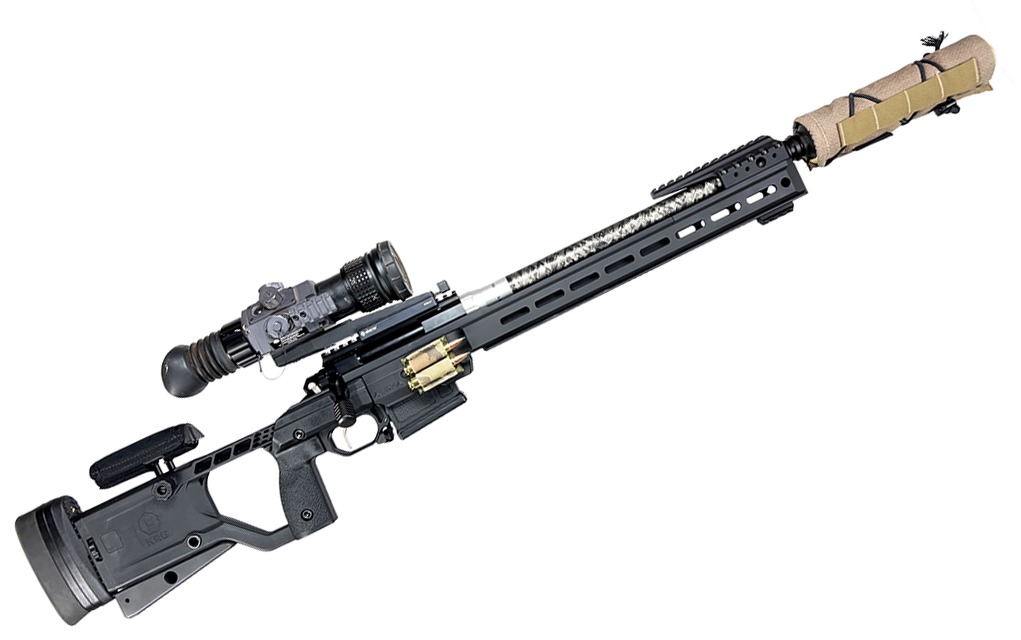

Editor’s Note: This article originally appeared in the November 2024 issue of Gun Digest the Magazine.
More On Night Vision & Thermal Optics:


Next Step: Get your FREE Printable Target Pack
Enhance your shooting precision with our 62 MOA Targets, perfect for rifles and handguns. Crafted in collaboration with Storm Tactical for accuracy and versatility.
Subscribe to the Gun Digest email newsletter and get your downloadable target pack sent straight to your inbox. Stay updated with the latest firearms info in the industry.





